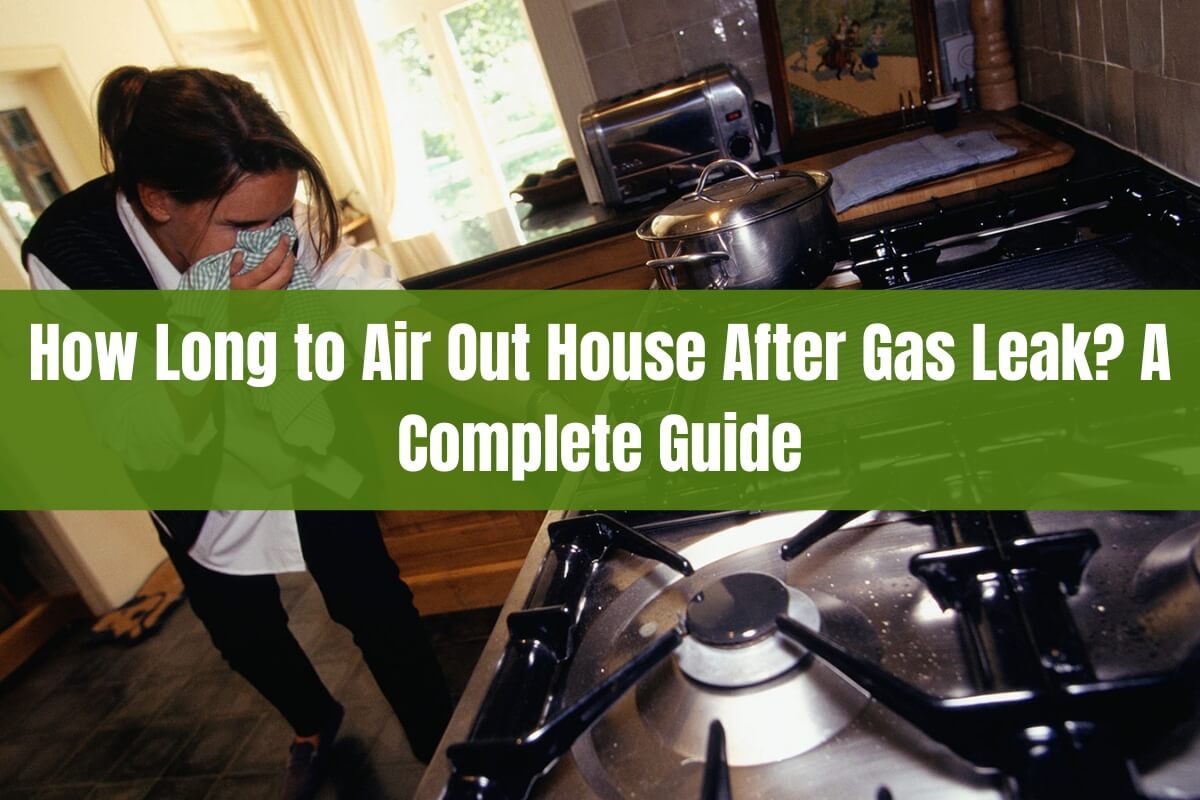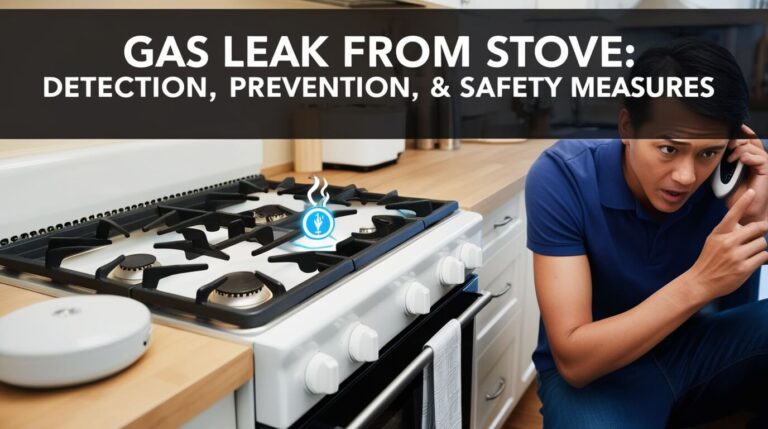
Natural gas is one of the most common energy sources for heating homes and powering appliances across the United States. While generally safe when handled properly, a gas leak in your house can quickly become extremely dangerous. Even a small leak poses a risk of fire, explosion, and exposure to toxic fumes. That’s why it’s so important to know how to recognize the warning signs and take immediate action if you suspect a leak.
But what if you do experience a gas leak in your home? Once the leak is contained and the gas is turned off, how long should you air out your house before it’s safe to go back inside?
The short answer is: it depends on factors like the severity of the leak and the size of your home, but you should plan to thoroughly ventilate for at least 15 minutes up to several hours. Do not simply rely on the gas smell dissipating – you must get professional confirmation that gas levels have returned to normal before re-entering.
This comprehensive guide will cover everything you need to know about properly airing out your house after a gas leak, including:
- What a gas leak is and why it’s so dangerous
- How to identify signs of a leak in your home
- Steps to take if you suspect a gas leak is present
- How long ventilation should last based on leak severity
- Proper procedures for safely ventilating after a leak
- Tips for preventing future gas leaks and protecting your home
- When it’s truly safe to go back inside after airing out
What is a Gas Leak and Why is it Dangerous?
A gas leak refers to the unintended escape of natural gas from pipes, appliances, or other containment vessels. Natural gas is comprised primarily of methane, a highly flammable compound that can combust when exposed to even a tiny spark or flame.
As methane accumulates in an enclosed space like a house, it creates an extreme fire and explosion hazard. The gas can also displace oxygen, leading to asphyxiation and poisoning in high concentrations. Inhaling natural gas for prolonged periods may cause symptoms like:
- Headaches
- Dizziness
- Fatigue
- Nausea
- Irregular breathing
- Loss of consciousness
That’s why it’s absolutely critical to evacuate the premises and contact emergency services at the first sign of a potential gas leak. Even a minor leak can escalate into a life-threatening situation rapidly.
Signs of a Gas Leak in Your Home
To help you identify a gas leak quickly, be on the lookout for these common warning signs in your home:
Rotten Egg or Sulfuric Smell: Natural gas is actually odorless, but utility companies add the pungent odorant mercaptan to give it that distinctive “rotten egg” smell. This makes leaks much easier to detect.
Hissing or Whistling Sounds: A loud hissing, whistling, or roaring sound near gas pipes or appliances could indicate air escaping from a leak or hole somewhere in the line.
Dead or Dying Plants: If houseplants located near a gas source like a stove or furnace suddenly start turning brown or withering, it may be due to gas exposure displacing oxygen in the air.
Physical Symptoms: Exposure to concentrated gas can cause headaches, dizziness, nausea, fatigue, and breathing difficulties in people and pets.
Higher Gas Bills: An unexpectedly high gas usage reading on your utility bills compared to previous cycles could signal an undetected leak.
If you notice any of these red flags, don’t delay – evacuate your home immediately and contact your local gas company or fire department from a safe area away from the house.
What to Do If You Suspect a Gas Leak
Acting swiftly is crucial if you suspect a gas leak in your home. Follow these steps to ensure your family’s safety:
- Evacuate all people and pets from the house right away. Do not waste any time gathering belongings or searching for the source of the leak. Exit your home as quickly as possible.
- Do not operate any electrical devices, lights, or switches that could create a spark. Even a small spark could potentially ignite the gas and cause an explosion.
- If possible, open windows and doors on your way out to allow some ventilation. But do not waste time – get outside first.
- From a safe location away from your house, call 911 and/or your gas company’s emergency line immediately. Alert them to the suspected gas leak.
- Do not re-enter your home until the gas company or fire department confirms the leak has been fixed and your house has been properly ventilated. Even if the smell dissipates, do not assume all gas has been cleared without professional verification.
You should also be aware that carbon monoxide detectors cannot detect natural gas leaks directly. They can only alert you to dangerous buildup of carbon monoxide, which can result from faulty appliances incompletely burning natural gas. Investing in combustible gas detectors provides an extra level of protection.
How Long Should You Air Out House After Gas Leak?
So once a gas leak in your home has been contained, how long do you need to keep ventilating before it’s safe to go back inside? There’s no single definitive timeframe, as it depends on:
- The severity and size of the initial gas leak
- The total square footage and layout of your home
- Air flow and weather conditions in your area
However, most experts and authorities agree you should plan to thoroughly air out your house for at least 15 minutes to an hour after a minor leak, or up to several hours for larger, more serious leaks.
The smell may dissipate quickly, but that doesn’t mean all gas has cleared the area. Your sense of smell can become desensitized after prolonged exposure. Never rely solely on your nose to determine if it’s safe to re-enter after a leak.
Instead, evacuate and allow your gas company or fire department to fully inspect and test your home’s gas levels before giving the all-clear. They have professional-grade equipment to accurately measure gas concentrations.
Here are some key steps for properly ventilating your home after containing a gas leak:
- Open all windows and doors throughout the house. This allows maximum airflow to cycle fresh air in and gas out.
- If approved by authorities, use fans, vents, and your HVAC system to increase ventilation. But do not turn on any of these if it risks igniting remaining gas pockets.
- Let your home air out for at least 15-20 minutes for small leaks, and plan for several hours for larger, more severe incidents. The gas company can advise a more specific timeframe based on their readings.
- Never attempt to locate or repair the leak yourself. This could exacerbate the problem and put your safety at further risk.
- Have the gas company and/or fire department test gas levels periodically and give final confirmation when it’s safe to re-occupy your home.
Taking these precautions and listening to expert guidance is crucial, as lingering gas exposure can still be hazardous even after the leak itself is sealed.
Preventing Future Gas Leaks in Your Home
While experiencing a gas leak can be scary, there are some simple maintenance steps you can take to prevent future incidents and keep your family secure:
- Schedule annual inspections of gas lines and appliances by certified HVAC professionals or your utility company. Many offer free safety checks.
- Know the location of gas shut-off valves in case you need to quickly shut off the gas supply to your home or individual appliances in an emergency.
- Install combustible gas detectors and CO alarms throughout your home. Having these working alarms can provide critical early warning of a leak.
- Carefully follow all manufacturer instructions for safe operation of gas-powered appliances like stoves, furnaces, water heaters, fireplaces, etc.
- Call 811 before any digging or excavation project to have underground utility lines marked. Accidentally striking a gas line is a common cause of leaks.
Taking these proactive safety steps now can save lives by preventing potentially devastating gas leak incidents down the road.
Signs it’s Safe to Re-Enter Home After Gas Leak
After a confirmed gas leak in your home, it’s understandable to feel apprehensive or uncertain about when it’s truly safe to go back inside, even after ventilation efforts. Here are some clear indicators it should be okay to re-occupy your house:
- There is absolutely no lingering smell of gas detectable at all, even after being outside for some time. Your nose has likely become desensitized.
- Gas company technicians or fire department personnel have tested gas levels throughout your home and officially declared it safe and clear.
- Carbon monoxide detectors throughout the house show normal, safe readings. Any dangerous CO buildup would suggest appliances are not burning gas fully and safely.
- Pilot lights on gas stoves, furnaces, water heaters etc. are burning properly with a steady, blue flame. Flickering or yellow flames can indicate another leak or ventilation issue with the appliance itself.
If you’ve ticked all of those boxes after properly airing out per expert instructions, it should be okay to re-enter your home after a gas leak incident. However, keep these final safety reminders in mind:
Conclusion
Dealing with a gas leak in your home is an unnerving experience, but one you must be prepared to handle calmly and by the book. The potential devastation of fires, explosions, and poisoning simply can’t be risked by taking chances.This guide outlined clear steps on how to identify potential gas leaks through smells, sounds, and other sensory cues.
It stressed evacuating and calling emergency services first, then thoroughly airing out your home for a minimum of 15 minutes to several hours based on the leak’s severity. Most crucially, it underscored only re-entering once trained professionals have definitively declared the area safe after testing.
While an ounce of prevention through proper gas line and appliance maintenance is ideal, the unfortunate reality is that leaks can still occur unexpectedly. Being armed with the right knowledge and action plan can help ensure your family’s safety if you ever do face this hazardous scenario. When it comes to gas leaks, it’s always better to be overly cautious than put your loved ones in harm’s way.






